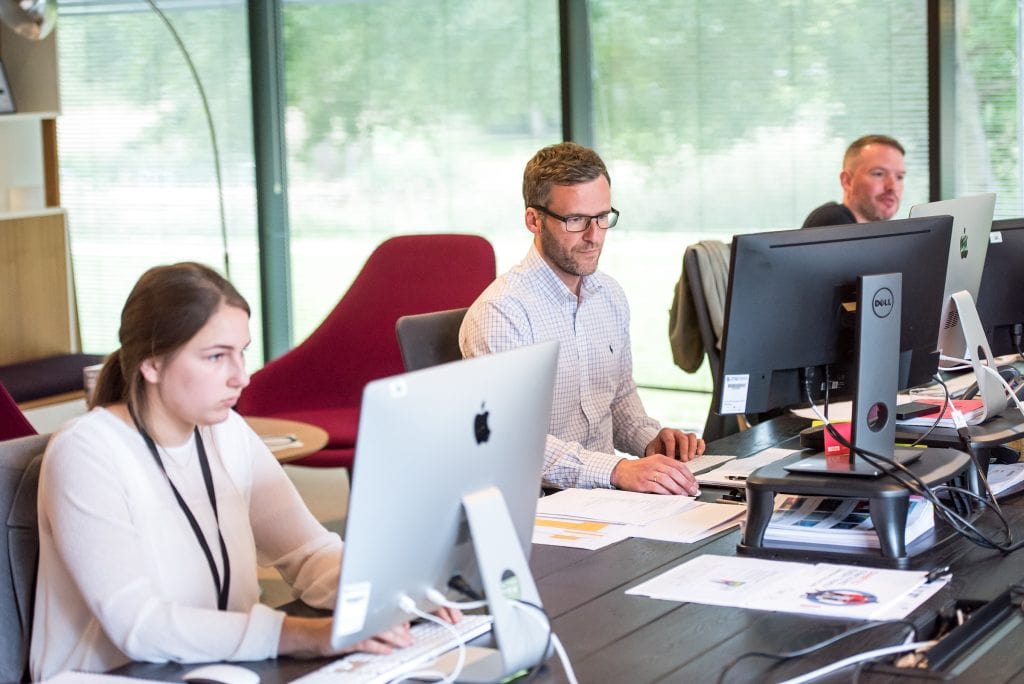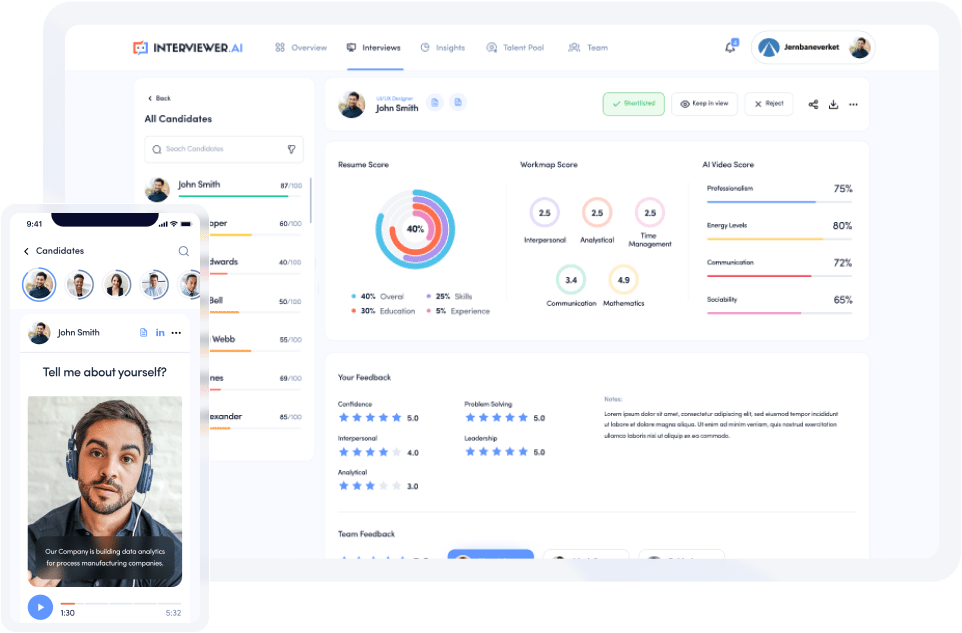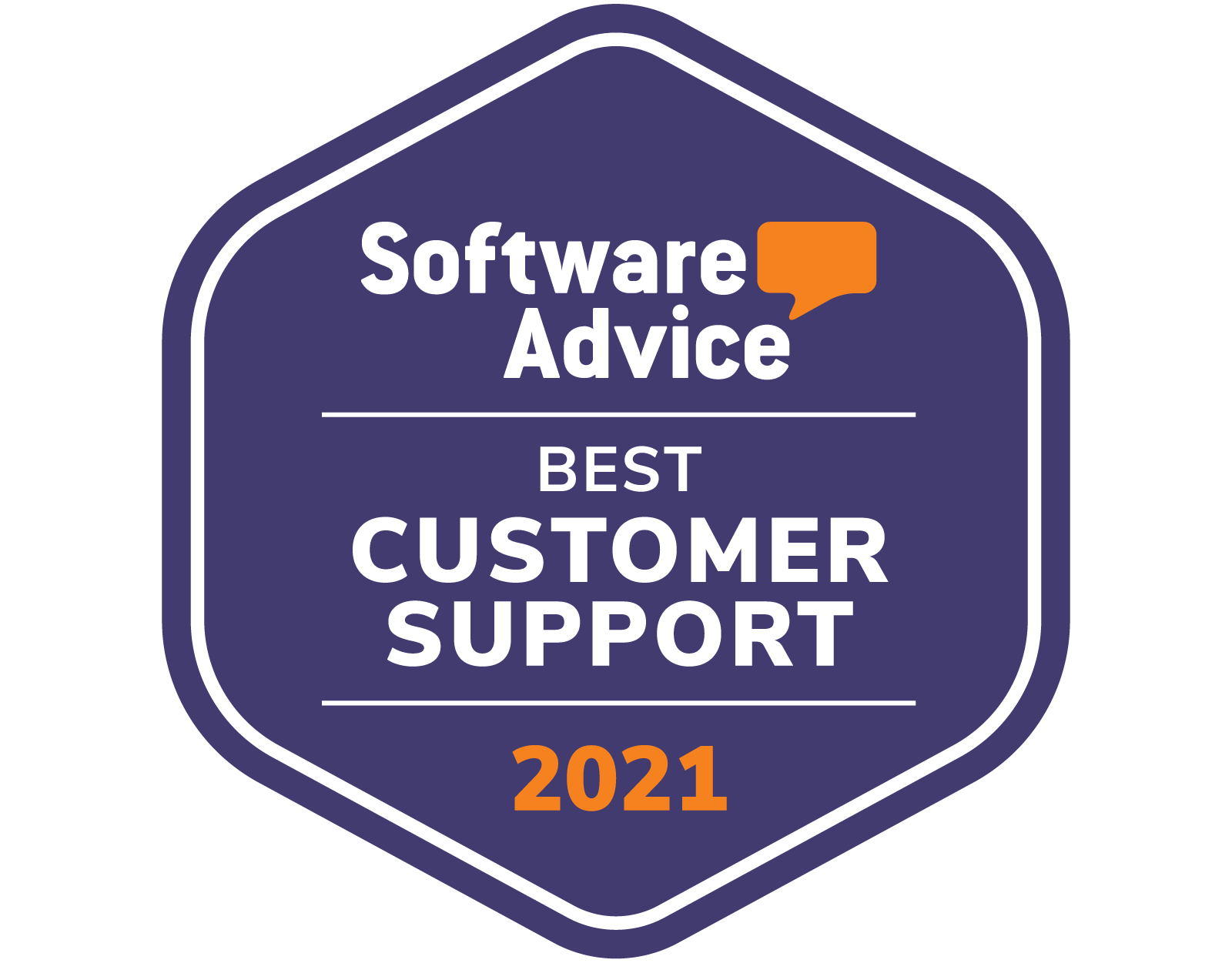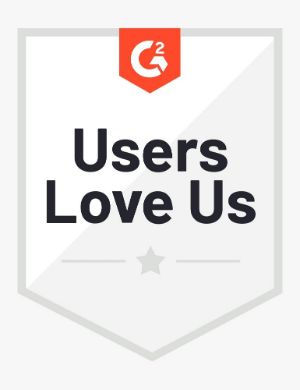As the business world continues to move online and more companies become global, remote hiring is becoming an increasingly popular recruitment strategy. In the near future, it is likely that more and more businesses will take advantage of this method for recruiting, interviewing and hiring employees who work from a location other than their main office. As an efficient way to source talent from all over the world, remote hiring offers several benefits such as cost savings, improved access to a larger pool of candidates and increased workforce diversity.
Remote hiring offers several advantages for both the employer and the employee:
- Increased talent pool: Remote hiring allows employers to access a larger pool of talent, as they are not limited to candidates in a specific geographic location. This can lead to a more diverse and qualified candidate pool.
- Reduced costs: Remote hiring eliminates the need for relocation costs and can also reduce overhead costs, such as office space and equipment.
- Increased productivity: Remote employees may have more flexibility in terms of when and where they work, which can lead to increased productivity.
- Improved work-life balance: Remote employees have the ability to balance their work and personal lives more effectively, which can lead to increased job satisfaction and employee retention.
- Increased flexibility: Remote hiring allows employers to have a more flexible workforce, which can help them respond more quickly to changes in demand.
- Increased employee retention: Remote employees often report higher job satisfaction and are less likely to leave their jobs, which can help reduce employee turnover.
- Improved communication: Remote hiring allows for increased communication through technology and digital platforms, which can lead to faster and more efficient communication.
- Increased diversity: Remote hiring allows employers to access a more diverse group of candidates, regardless of their location. This can lead to a more diverse and inclusive workforce.
While remote hiring can offer many benefits, it also comes with its own set of challenges:
- Lack of face-to-face interaction: Remote hiring often lacks the personal interaction that is present in traditional hiring. This can make it harder to get a sense of a candidate’s personality and cultural fit, which are important factors in determining whether a candidate is a good fit for the company.
- Difficulty in assessing skills and qualifications: Assessing a remote candidate’s skills and qualifications can be more challenging than assessing an in-person candidate. This is because remote candidates may not have the opportunity to demonstrate their skills in the same way as in-person candidates.
- Technical difficulties: Remote hiring can be hindered by technical difficulties such as internet connectivity issues, which can make it harder to conduct remote interviews and assessments.
- Time zone differences: Remote hiring often involves candidates from different time zones. This can make it harder to schedule interviews and assessments, as well as to communicate with candidates in a timely manner.
- Limited networking opportunities: Remote hiring can limit networking opportunities for remote employees, which can make it harder for them to establish relationships and learn about new opportunities within the company.
- Lack of company culture: Remote hiring may limit the employee’s exposure to the company culture, which can make it difficult for them to understand the company’s values, mission and goals.
- Lack of supervision and management: Without regular face-to-face interactions, it can be difficult to manage and supervise remote employees. This can make it harder to ensure that they are meeting expectations and staying on track with their work.
Overall, while remote hiring offers many benefits, it also comes with its own set of unique challenges that must be considered and addressed in order to ensure a successful hiring process.
Use of ATS and their limitations with remote hiring
Application Tracking Systems (ATS) are widely used by organizations to automate and streamline the recruitment process. However, there are several limitations of ATS when it comes to remote hiring:
- Limited resume parsing capabilities: Many ATS systems rely on keyword matching and do not have advanced resume parsing capabilities. This means that they may not be able to accurately identify the skills and qualifications of remote candidates, leading to missed opportunities to hire the best candidates.
- Lack of support for multimedia: Many ATS systems do not support multimedia, such as videos or audio recordings, which are important tools for remote hiring. This means that remote candidates may not be able to showcase their skills and qualifications effectively, leading to missed opportunities to hire the best candidates.
- Limited remote interviewing capabilities: Many ATS systems do not have built-in remote interviewing capabilities, meaning that recruiters will have to rely on external platforms for remote interviews. This can lead to a disjointed and less efficient recruitment process, making it harder to evaluate remote candidates effectively
- Limited ability to assess a candidate’s cultural fit: ATS systems typically rely on a candidate’s qualifications and skills to shortlist candidates, but are not able to assess the candidate’s cultural fit, which is an important aspect of remote hiring.
- Lack of real-time feedback: ATS systems are typically batch processing systems, which means that they lack real-time feedback. This makes it difficult for recruiters to quickly identify and address issues with remote candidates, making it harder to evaluate remote candidates effectively.
It’s important to note that while ATS are a powerful tool to streamline the recruitment process, it’s not a replacement for human interaction and judgement. Thus, ATS should be used in conjunction with other recruitment strategies to ensure that the best remote candidates are identified and hired.
Reasons you should opt for an Asynchronous Video Interview (AVI) software for remote hiring
As the job market becomes more competitive and the hiring process becomes more complex, companies are turning to new technologies to streamline their recruitment process. One of the most popular new technologies is asynchronous video interview software, or AVI. This type of software allows companies to conduct video interviews with candidates at any time, without the need for both parties to be available at the same time. In this article, we will explore the reasons why companies should opt for an asynchronous video interview software.
The first and most obvious reason to use AVI is that it allows for remote hiring. With the COVID-19 pandemic, remote work has become the new norm, and companies are looking for ways to adapt to this new reality. AVI allows companies to conduct interviews with candidates who are not located in the same area, which is especially useful for companies that are expanding into new markets. This is also useful for companies that have a high turnover rate or that are looking to fill multiple positions at once, as it allows them to conduct interviews with multiple candidates simultaneously.
Another reason to use AVI is that it saves time and money. Traditional in-person interviews can be time-consuming and costly, especially if the company has to pay for travel and lodging for the candidate. AVI eliminates the need for travel and lodging, which can save the company a significant amount of money. Additionally, AVI allows the company to conduct more interviews in a shorter period of time, which can speed up the hiring process.
AVI also improves the candidate experience. With AVI, candidates can complete their interviews at a time that is convenient for them, which can be especially beneficial for those who are working or have other commitments. Additionally, AVI can reduce the stress of the interview process for the candidate, as they can complete the interview in their own environment and take the time to prepare their answers.
AVI also allows for better collaboration among hiring teams. With AVI, hiring teams can share feedback on candidates and make decisions on who to move forward with more easily. This is because the interviews are recorded and can be watched by multiple team members at any time, which eliminates the need for everyone to be available at the same time. Additionally, hiring teams can use AVI to conduct virtual group interviews, which can be especially beneficial for positions that require teamwork.
AVI also provides companies with valuable data and analytics. With AVI, companies can track the number of candidates that have completed the interview, the time it took for them to complete the interview, and the number of questions that were answered. This information can be used to improve the recruitment process and make more informed hiring decisions. Additionally, AVI can be integrated with other recruitment software, such as applicant tracking systems, which can provide even more data and analytics.
Finally, AVI is a cost-effective solution. Traditional in-person interviews can be expensive, as companies need to pay for travel and lodging for the candidate. AVI eliminates these costs, which can save the company a significant amount of money. Additionally, AVI is typically subscription-based, which means that companies only pay for the software when they need it, rather than having to pay a large upfront cost.
In conclusion, asynchronous video interview software (AVI) is an innovative solution that allows companies to conduct remote interviews, save time and money, improve the candidate experience, better collaborate among hiring teams, and provide valuable data and analytics. Additionally, it is cost-effective and allows companies to have more control over the hiring process. With the increasing popularity of remote work and the need for companies to adapt to the new reality, AVI is becoming an increasingly important tool for companies to have in their recruitment toolbox.

The future of work
The future of work is likely to involve a greater degree of remote work, however, it’s also possible that there will be a shift towards a hybrid model where some employees work remotely while others work on-premise.
The COVID-19 pandemic has accelerated the shift towards remote work, and many companies have found that remote work can be just as productive as working on-premise. This has led to an increase in companies offering remote work as a permanent option for their employees.
However, remote work also has its own set of challenges like lack of face-to-face interaction, isolation, and difficulty in creating a work-life balance. These challenges may lead to a desire for more in-person interaction and collaboration among employees which can be best achieved by having them work on-premise.
Additionally, some industries and job roles may require employees to be on-premise, such as healthcare, manufacturing, and construction.
It’s likely that the future of work will involve a hybrid model where some employees work remotely while others work on-premise. Each organization will have to evaluate their specific needs and circumstances to determine the best balance between remote and on-premise work for their employees.
Hybrid work allows employees to have the flexibility of working remotely while still having the opportunity to interact with their colleagues in-person. It can also provide a balance between the benefits of remote work, such as increased productivity and reduced commute times, and the benefits of on-premise work, such as face-to-face interaction and team collaboration.
Hybrid work also allows organizations to adopt a more flexible approach to work, which can be beneficial in attracting and retaining talent. It also allows organizations to adjust the balance between remote and on-premise work depending on their specific needs and circumstances.
The future of recruiting talent
The future of recruiting talent is likely to involve a continued shift towards technology-enabled and data-driven approaches. Some potential developments include:
- Increased use of Artificial Intelligence (AI) and Machine Learning (ML): These technologies can be used to automate and streamline many aspects of the recruitment process, such as resume screening, candidate matching, and interview scheduling.
- Greater use of video interviewing: Asynchronous video interviewing platforms are becoming more popular as they allow recruiters to conduct remote interviews more efficiently and effectively.
- Increased use of Social Media and online platforms: Recruiters will likely continue to use social media and online platforms to identify and engage with potential candidates, as well as to build their employer brand.
- More emphasis on employee experience: Recruiting talent will increasingly focus on creating positive candidate experiences to attract top talent.
- Greater use of big data and analytics: Recruiters will be able to use big data and analytics to identify patterns and insights that can inform their recruitment strategies and improve their ability to identify the best candidates.
- Greater use of virtual and augmented reality: These technologies can be used to create immersive and interactive recruitment experiences, such as virtual job fairs, virtual tours of the office or virtual onboarding.
- More emphasis on employee retention: Recruiting talent will also focus on employee retention, by creating long-term career development plans, employee engagement and employee benefits.
Overall, the future of recruiting talent is likely to involve a continued shift towards technology-enabled and data-driven approaches, as well as a greater emphasis on creating positive candidate and employee experiences.
In conclusion, the future of recruitment is rapidly changing and will continue to be powered by technology and data. Companies will need to shift their focus to creating positive candidate experiences, as well as staying ahead of the curve on industry trends. Additionally, employers will have to prioritize diverse and inclusive hiring practices in order to build strong teams that reflect their values. With the right strategies in place, organizations can find the best talent for their team and increase long-term success.
Interviewer.AI is a technology platform purposely built to support Recruiters and HR teams in finding top talent for their companies. Our mission is to make hiring equitable, explainable, and efficient. to screen in advance and shortlist the candidates that meet the criteria set.
Learn more about how Interviewer.AI can help your business.
Increase your hiring team’s efficiency using a combination of resume scoring, skill assessment, and asynchronous video interviews.

Sunny Saurabh is the Co-founder and CEO of Interviewer.AI. At Interviewer.AI, he is focused on building the penultimate step to hire great talent. He wants to make hiring more equitable and help businesses hire top talent effortlessly.










